Discover 9 Animals That Lurk Atop West Virginia's Tallest Mountain - AZ Animals
Spruce Mountain is the tallest mountain in West Virginia, with Spruce Knob peak 4,863 feet above seawater. The areas around the mountain offer day hiking and backpacking for outdoor enthusiasts, providing them with breathtaking views of the surrounding scenery. For example, you can view pastures, grassy openings, and forested ridges from this peak. Furthermore, the grounds are covered with huckleberry and blueberry plants. As a result, the area supports an abundance of wildlife. So discover the 9 animals that lurk atop West Virginia's tallest mountain.
1. Red Fox
Red foxes occur all over Virginia except the areas of the southeast corner. These stealthy critters prefer a diverse habitat, in secluded places, like atop a mountain or farmlands. These foxes are similar in size to a small dog, approximately 39 to 41 inches, weighing 9 to 12 pounds. They have pointed noises, prominent, erect ears, and a bushy tail ending in a white tip. Red foxes have long, soft fur and derive their names from the reddish appearance of their coats.
Their breeding season occurs from December to February, but they are most active in late January. Pups are usually born between March and April; females can give birth to around four to seven pups per litter. Males also play a role in the pups' lives by bringing food to the den until the female can leave her offspring alone for short periods. Both parents stay with their offspring until they are old enough to leave home.
Red foxes are primarily nocturnal and non-migratory. Therefore, they usually stay in the same area for their entire lives. These small predators are notorious for their sly nature, as they are experts at hiding from predators. For example, they run on fence poles to avoid leaving tracks. Lastly, red foxes have a lifespan of roughly five years.
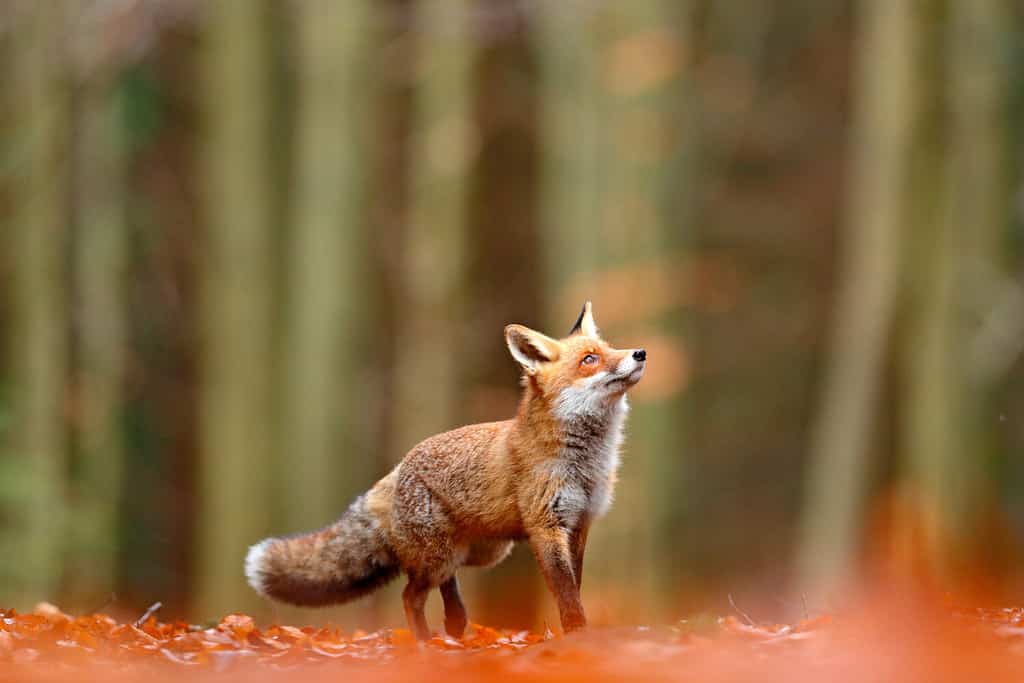
©Ondrej Prosicky/Shutterstock.com
2. Snowshoe Hare
Snowshoe hares are one of the animals that lurk atop West Virginia's tallest mountain. These hares occupy areas above 3,000 feet in West Virginia. However, populations in the state are restricted to the northern hardwood and spruce forests. However, their numbers are declining as they depend on snowfall to survive the winter, and global warming has severely affected their environment. As a result, the density and extent of their range are unknown in West Virginia.
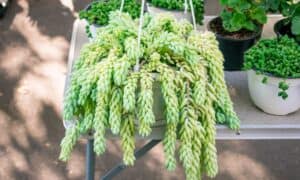
Snowshoe hares measure around 20 inches long and weigh approximately 3 to 5 pounds. During the summer, their coats are a rich rusty brown. However, their winter coats change to white, apart from brown patches on their feet and ears. Their breeding season takes place between April and August, and females usually have litters of 2 to 4 leverets (offspring).
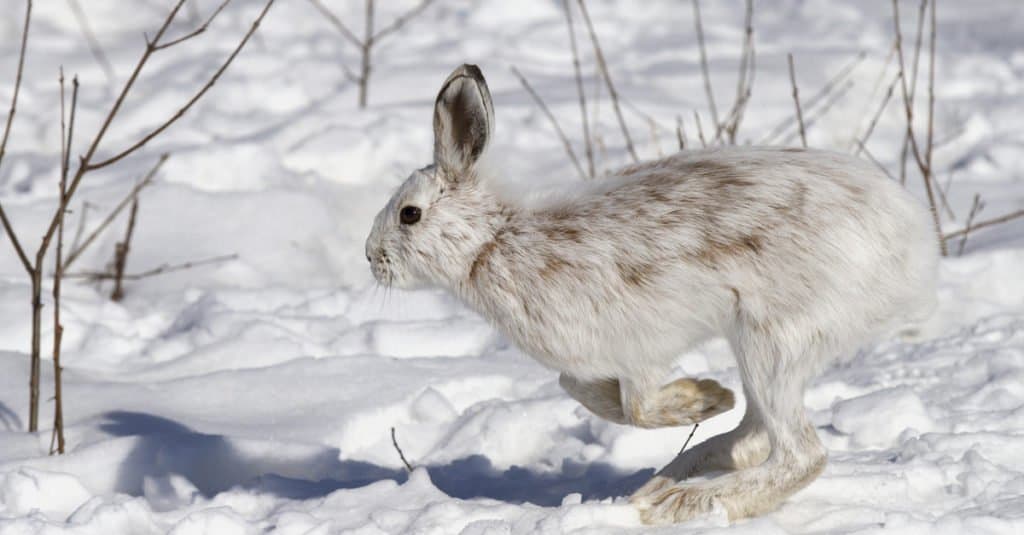
©Jim Cumming/Shutterstock.com
3. Bobcat
The only feline predator native to West Virginia is the bobcat. However, this cat wasn't always the only feline predator in the state. The mountain lion once roamed through the Mountain State but is now extinct in the area. Bobcats are bigger than average-sized house cats, weighing between 15 to 35 pounds. Furthermore, they derive their name from their bobbed tails. These cats have grayish-brown to yellow fur, with black spots and stripes covering their bodies. Additionally, they have white necks and bellies. However, their most distinguishing feature is their pointy ears with one-inch black tufts on the tips.
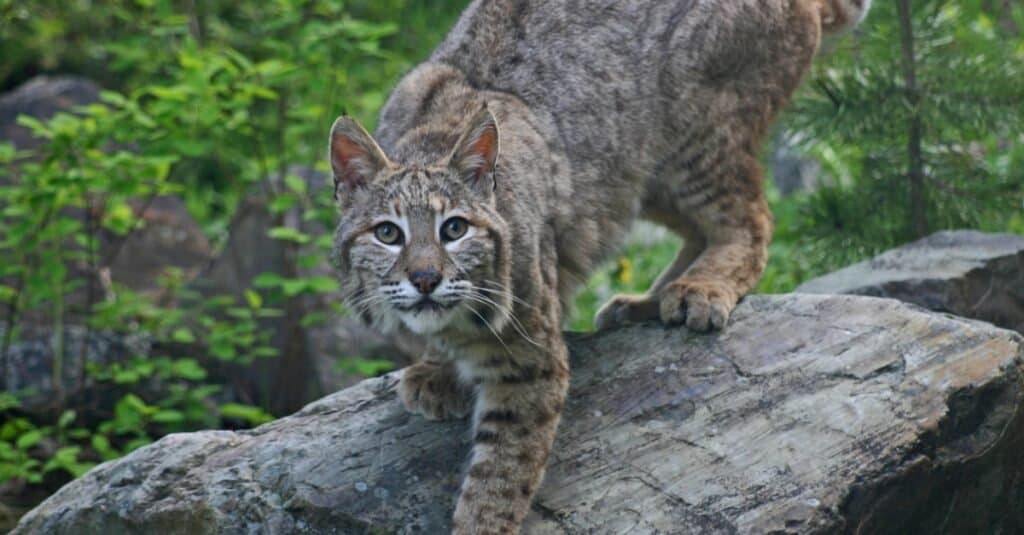
©iStock.com/Anita Elder Design
4. Ruffed Grouse
The ruffed grouse is a well-known game bird that occurs throughout the state. They are relatively small birds compared to other grouse, with short, triangular crests and fan-shaped tails. In addition, these birds have short legs and appear slimmer than other species of grouse. Ruffed grouse rely on forest habitats, where they are active all year round. Furthermore, they are nonmigratory birds. Their winter diet consists of the following:
- Twigs
- Catkins
- Buds from aspen
- Birches
- Black cherry trees
However, during other periods throughout the year, these birds feed on shoots, seeds, leaves, fruits, and acorns that fall to the ground.
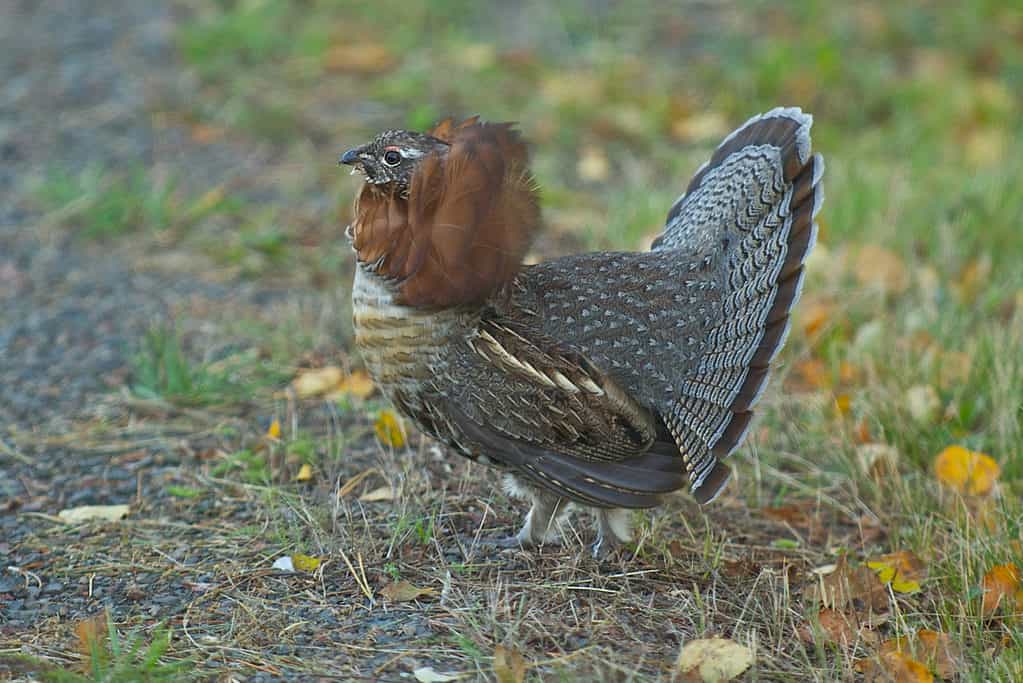
©iStock.com/tmarko
5. Common Raven
The common raven is one of the animals lurking atop West Virginia's tallest mountain. These birds are around the same size as a hawk and completely black. They occur in Pennsylvania, New York, West Virginia, Virginia, and Maryland. These black birds are large with shaggy through feathers. Common ravens can grow between 22 to 27 inches long and have a wingspan of 4.5 feet. Many people confuse these birds with American crows. However, the raven is approximately 1/3 larger and has long, pointy throat feathers. Unlike many bird species, males and females look alike, but males are bigger.
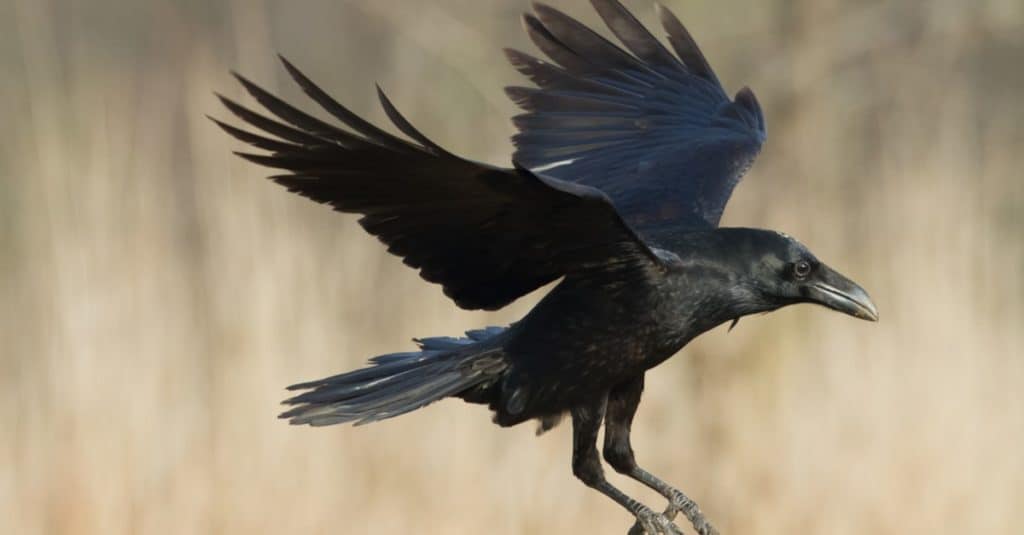
©Marcin Perkowski/Shutterstock.com
6. Dark-eyed Junco
The dark-eyed junco is the most common black and white bird in West Virginia. They like to inhabit areas like:
- Conifer and mixed woods
- Open woods
- Roadsides
- Undergrowth
- Brush
However, they prefer to breed in clearings or edges of coniferous or mixed woodland. Furthermore, these birds inhabit thickets, woodlands, brushy environments, and suburban areas during the colder months. Dark-eyed juncos primarily feed on seeds and insects. In fact, most of their summer diet consists of insects, like beetles, caterpillars, true bugs, grasshoppers, and spiders. However, their winter diet includes grasses, seeds, and weeds. If available, these birds will treat themselves to berries. Lastly, juveniles primarily feed on insects.

©JPL Designs/Shutterstock.com
7. Black Bear
Black bears are one of the animals that lurk atop West Virginia's tallest mountain. They are the only bear species that occur in the state. Black bears are not aggressive, unlike their cousins, the polar and grizzly bears. Instead, they tend to avoid humans. Black bears prefer to inhabit forested areas and only visit urban or suburban environments if driven by intense hunger. This is when most attacks on humans occur. As a result, these bears seem to be motivated by hunger, not territory.
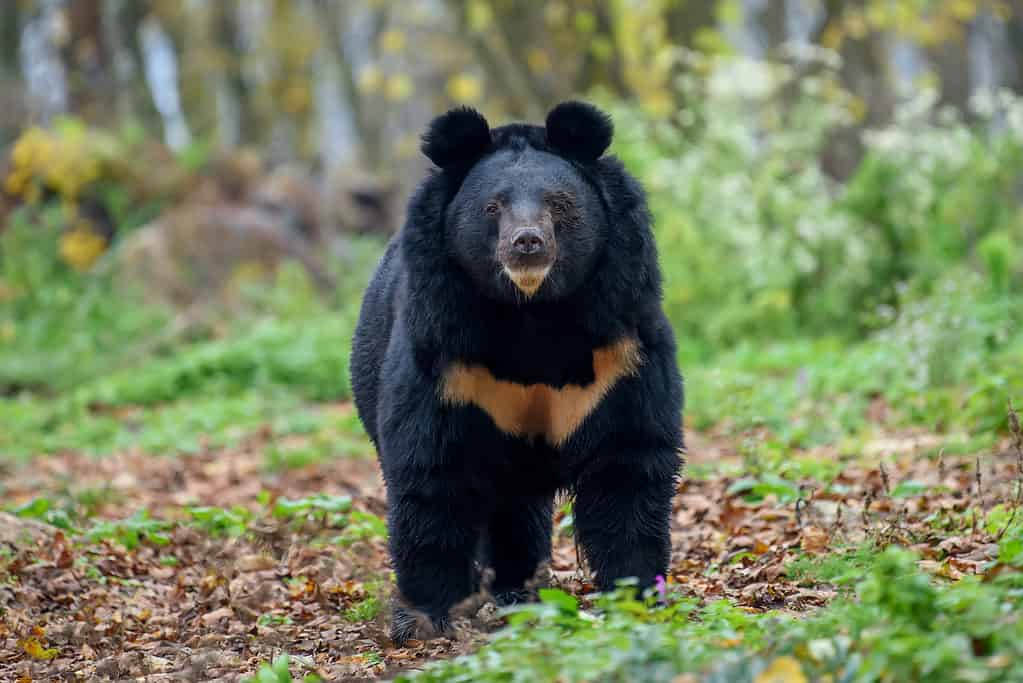
©Volodymyr Burdiak/Shutterstock.com
8. Red-Tailed Hawk
These hawks occur in West Virginia throughout the year. In fact, they are commonly sighted; red-tailed hawks make up 16% of all sightings in the state. Most people spot red-tailed hawks from their cars on road trips. They are often seen circling over open fields in search of prey. Additionally, they often perch on telephone poles. Males measure between 19.7 to 25.6 inches long and weigh around 24 to 46 ounces., with a wingspan of 445 to 52 inches wide. However, females are slightly heavier, weighing between 32 to 52 ounces. But, they are not as long as males, measuring around 20 to 26 inches, with a wingspan of 45 to 52 inches wide.
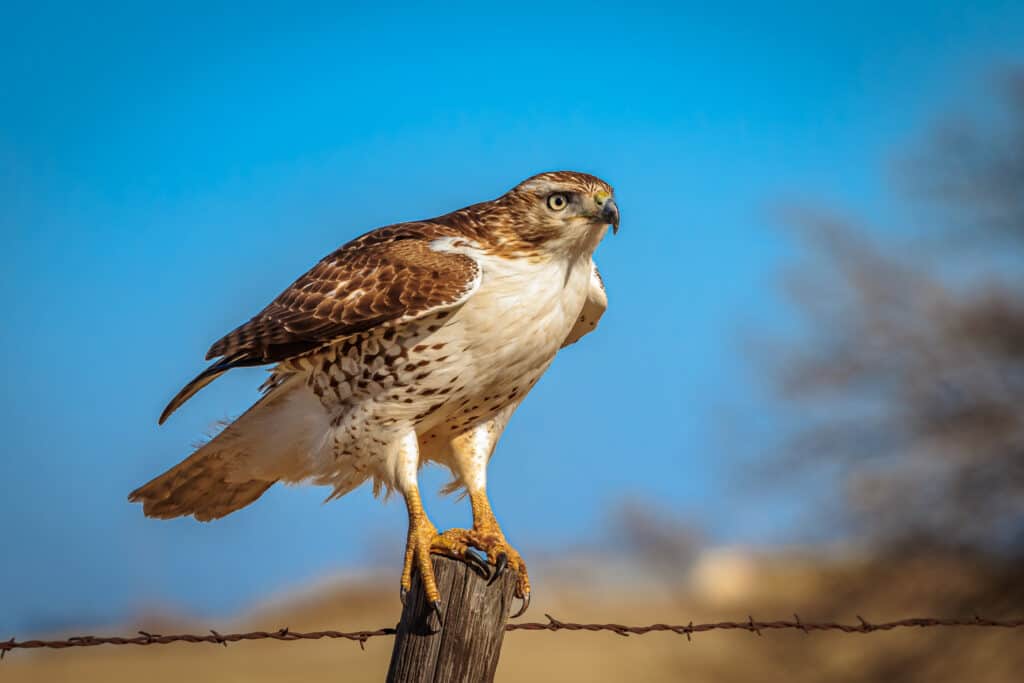
©Richard G Smith/Shutterstock.com
9. Porcupine
The North American porcupine is one of the animals lurking atop West Virginia's tallest mountain. Their bodies are covered by needle-like hairs known as quills, which they use to defend themselves from predators. However, they cannot shoot their quil-like hair; these pointy weapons are released when they come into contact with an object. While these critters look awkward on the ground, they are brilliant climbers and spend a great deal of time in trees.
North American porcupines are herbivores, and their diet consists of stems, tree bark, and leaves. However, they tend to prefer smooth-bark. In addition, porcupines are very destructive as they gnaw almost anything, like houses, wooden cabins, garden hoses, tool handles, and vehicle tires. These critters are active throughout the year and are mostly nocturnal. They usually retreat to shelters like caves, trees, rock outcroppings, dense brush, and hollow trees.
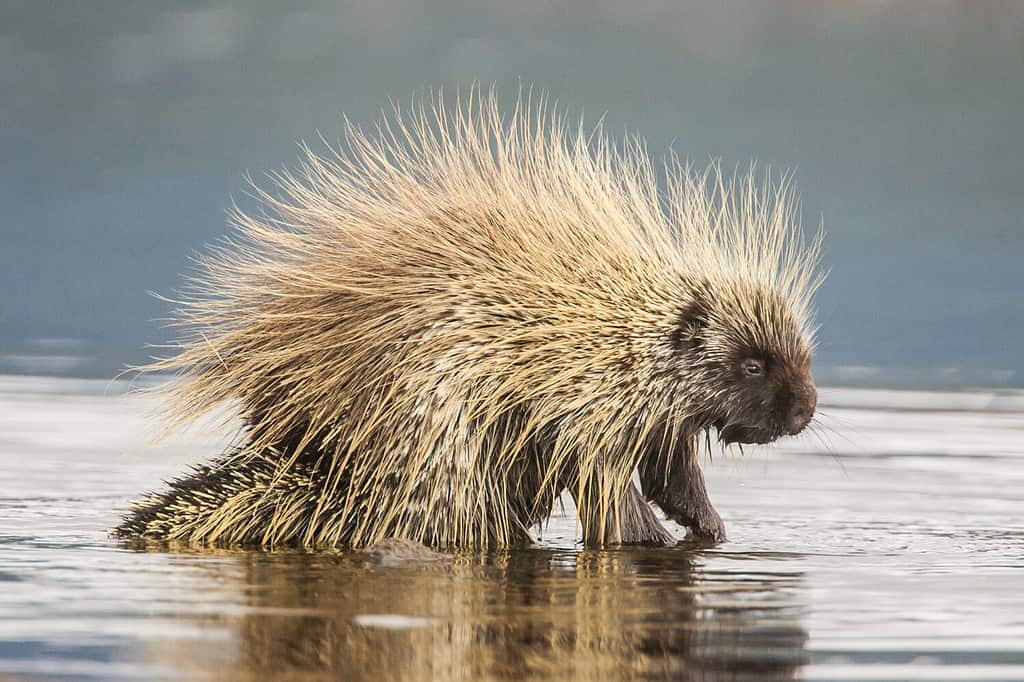
©Jukka Jantunen/Shutterstock.com
Comments
Post a Comment